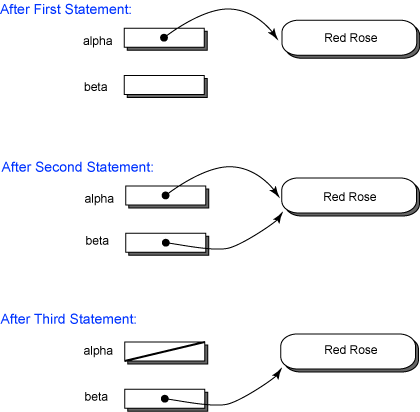String alpha = new String("Red Rose");
String beta = alpha;
alpha = null;
beta.
This time, the object does not become garbage.
This is because in the second statement a reference to the object is saved
in a second variable, beta.
Now when, in the third statement, alpha is set to null,
there is still a reference to the object.
There can be many copies of the reference to an object. Only when there is no reference to an object anywhere does the object become garbage.
(Review:) How can you determine what an object of a particular class can do?